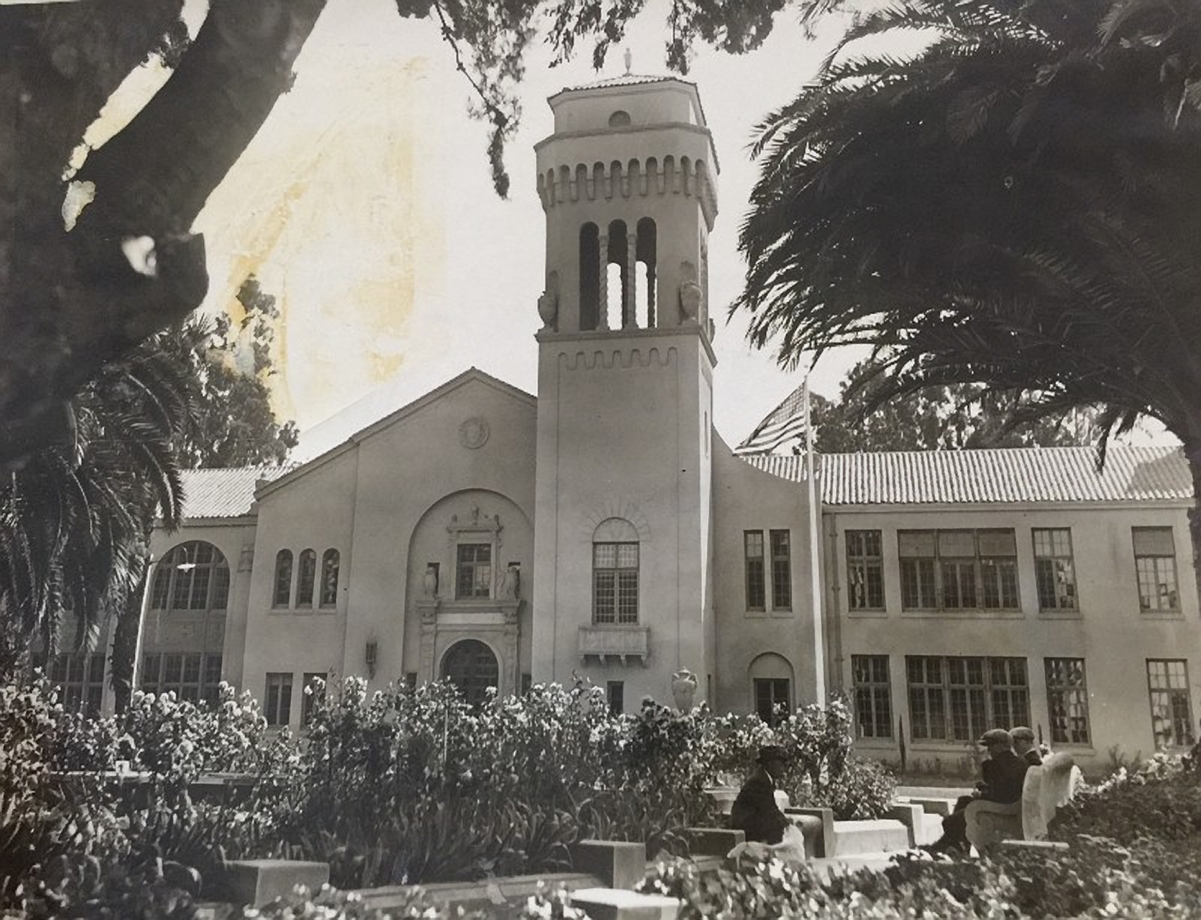Pun intended, the landmark bell tower at Sequoia High School is named for A. C. Argo, a towering figure in campus history who saw the school grow from 345 students when he took over as principal in 1921 to 2,500 when he left in 1948, later warning that two classes of “unfortunate students” emerged during his career: the underprivileged and the over-privileged. One has to wonder what he would think of contemporary students, so influential they jettisoned the school’s Cherokee mascot and replaced it with a Raven.
Argo, whose initials stood for Arnold Clarence, made his assessment in an interview with the Redwood City Tribune, concluding that both groups “need special counseling in the schools.” The underprivileged are “greatly handicapped” because they come from homes of limited means and culture, he said. The answer, according to Argo, would come via understanding, counseling and special help. Not as obvious in their needs were students from homes “where everything was done for them.
“They have limited responsibilities and are many times left on their own by busy, socially-minded parents,” he continued. “As a result they are lazy, selfish and bored with life. They never will be happy until they learn to work, take responsibility and serve others.”
Sealing a Welcome
One of the lasting legacies of Argo’s tenure is the school seal adopted in 1925, a work of welcoming art in mosaic tile located in the school’s main entrance in the tower as well as in a stained-glass window in the library. The seal, emblazoned with the word “unaliyi,” is also part of a tarp that hides a huge mural in the entrance. The mural depicts Spanish missionaries greeting each other as native people look on. The mural was completed by students in 1947, long before Argo would have had to fret over culturally sensitive opinions. BTW: Unaliyi is Cherokee for “place of friends.”
—
This story appeared in the June edition of Climate Magazine.
—
Argo, who passed away in 1982, came to Redwood City in 1920, just in time to oversee the construction of the new campus at its present site off El Camino Real, a park-like setting that contrasted with the earlier school located downtown, across El Camino Real on Broadway. Argo took up his new post after a two-year tenure as superintendent of schools in Pasco, Washington. His roots were in the Northwest, where he earned his Bachelor of Science degree from the University of Washington in 1912.
Argo started his career in Newberg, Ore., and taught science, mathematics and German. He had little difficulty in planting his roots on the Peninsula, in short time becoming a charter member of the Redwood City Kiwanis Club. He also was a charter member of the Sequoia YMCA and was active in the Masonic Lodge and the First Congregational Church.
The Tower Dedicated
Fashioned after the tower that overlooks Stanford University, the one at Sequoia was dedicated in Argo’s memory in 1988. The plaque notes that “in the room at the foot of this tower, Mr. Argo and his board shaped policies of enduring importance.” Then-School Superintendent Merle Fruehling told the crowd that Argo was not only instrumental in helping design what has been called one of the most beautiful campuses in the nation, he also assembled “an outstanding group of teachers in the ‘30s and ‘40s.” His physical education and social living programs were ahead of their time, particularly the physical education classes which combined nutrition study along with exercise. The teachers included Frank Griffin, who drew national headlines with his innovative “atomic loop” obstacle course that challenged students to work their way across walls of logs, dangling ropes and barriers of tires.
After leaving Sequoia, Argo continued to work in education, first in Japan as a civilian employee of the Army where he was an “education expert” with the Institute of Educational Leadership. Later, he became a professor of education at Drake University followed by a stint with the U.S. State Department educational divisions in Lebanon and Libya. Argo returned to the Peninsula in 1957, retiring again and making his home in Redwood City where he and his wife, Twila, had raised their four children.






